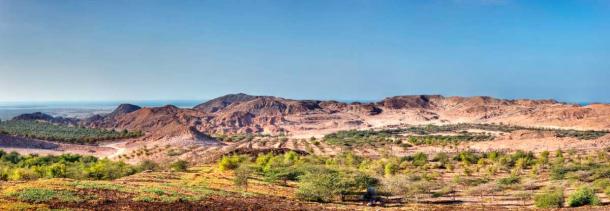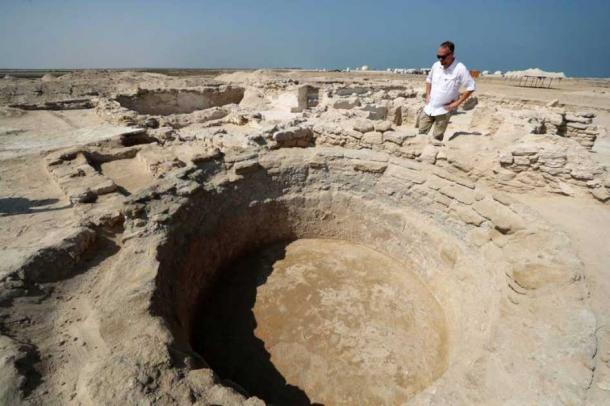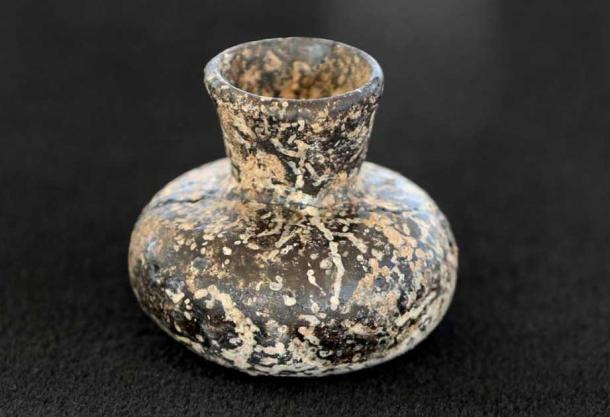The ruins of a Christian monastery dating back to the sixth or seventh century have been discovered on sandy Siniyah Island (Al Sinniyah Island), which is located in the southern Persian Gulf just off the coast of the United Arab Emirates (UAE) sheikhdom of Umm al-Quwain . The rare monastery dates back to pre-Islamic times, although it may have been constructed and occupied while the Prophet Muhammed walked the earth.
The unusual find was announced by officials from the Umm al-Quwain Department of Tourism and Archaeology, and reported on by the Associated Press on November 3. The timing of the announcement coincided with a visit to the site by a representative from the UAE Ministry of Culture and Youth.
The discovery of this shrine to first-millennium AD Christian belief on the Arabian Peninsula reveals the truth about the complex religious history of the Middle East. The monastery was built only a century or less before Islam became the dominant religion in the region. However, there is no reason to believe it was abandoned once Islam reached its pinnacle of influence.
This monastery is a highly unusual discovery, but it is not entirely unique. Another Christian monastery was found off the UAE coast in the early 1990s on Sir Bani Yas Island , which is a possession of the emirate of Abu Dhabi . This site includes a church, monastery and several courtyard houses, all of which were constructed at least a century after the newly unearthed monastery on Siniyah Island.

The existence of these two Christian outposts on Persian Gulf islands , built one or two centuries apart, proves that Christianity’s presence in the region both pre-dated and overlapped with that of Islam.
Timothy Power, an associate professor of archaeology at the United Arab Emirates University, helped investigate this astonishing new find. He draws a parallel between the confederation of emirates that exists in the region today and the mixture of cultures that occupied the Arabian Peninsula 1,400 years ago. Referring to the modern UAE as a “melting pot of nations,” Power noted that history seems to be repeating itself.
“The fact that something similar was happening here a 1,000 years ago is really remarkable and this is a story that deserves to be told,” he told the AP.

Another Christian monastery was discovered on Sir Bani Yas Island in the 1990s (Ismail.alghussein / CC BY SA 3.0 )
Early Christian Worshippers Find Refuge on Siniyah Island
Siniyah Island is just a stone’s throw off the coast of Umm al-Quwain, a lightly populated emirate that is located approximately 30 miles (50 kilometers) northeast of Dubai.
The sun-drenched island is dry and windswept, and features a series of sandbars that extend into the surrounding waters. Its landscape would have looked desolate in ancient times, but that didn’t stop early Christian worshippers from building a monastery on the island’s northeast side.
Carbon dating of organic residues found in the same layer as the monastery’s foundation put its date of construction between 534 and 656 AD. The Muslim prophet Muhammed was born in 570 and died in 632, so the odds are decent that the monastery was built while he was alive.
The Siniyah Island monastery’s floor plan is still visible in the ruins. Its design suggests Christian worshippers prayed inside a small, single-aisle church that was encompassed by the monastery’s grounds. Rooms inside the small church featured many fascinating artifacts or features, including a baptismal installation in one and an oven for baking bread and wafers for communion in another.

The site of the 6th century pre-Islamic Christian monastery included a church, refectory, cisterns and cells for the monks, where they spent time in solitude. (Department of Archaeology and Tourism of Umm Al-Quwain )
Right next to the monastery, archaeologists found a second building with four rooms that was probably build overlooking a courtyard. This structure was elaborate enough that it could have served as the residence of an abbot or a bishop.
One fortunate fact is that Siniyah Island is owned by the ruling family of Umm al-Quwain, and they have been determined to preserve its possible historic sites, even as the island is in the process of being developed as a tourist destination and residential area (a huge Siniyah Island development project was announced just last year).
The UAE Ministry of Culture has been sponsoring excavations on the island, which have been carried out in response to development-related activities that could threaten hidden archaeological treasures. Explorations around the site of the monastery are ongoing, and only a few hundred yards from the religious structures, archaeologists have unearthed a set of buildings that look like they belonged to a pre-Islamic village.

A glass vial recovered from the 6th century Christian monastery on Siniyah Island was in near-perfect condition after restoration ( Department of Archaeology and Tourism of Umm Al-Quwain )
Hidden History Revealed at a Truly Ancient Site
Historical evidence shows that early churches and monasteries were constructed up and down the Persian Gulf coasts, from the Middle East to India, in the first century AD. Archaeological digs have uncovered the ruins of ancient Christian structures in Iran, Iraq, Kuwait, Saudi Arabia, and Bahrain. The monastery on Sir Bani Yas Island was the first of its kind to be discovered, and now almost thirty years later, a second such monastery has been found in the same general area.
In truth, Siniyah Island and the surrounding Khor al-Beida marshlands of Umm al-Quwain were settled far earlier than the first century AD. According to Timothy Power, artifacts have been found that date all the way back to the Neolithic period, revealing that people have been living on the island for at least 10,000 years.
The Christian monastery is undoubtedly an important historic find, and special efforts will be made to protect it from the $675 million development project that will include the construction of a bridge to connect the Umm al-Quwain mainland with the island.
“It’s a really fascinating discovery because in some ways it’s hidden history—it’s not something that’s widely known,” Power said, while wondering what other amazing historical treasures might lie beneath the rocky soil and rolling sand dunes of Siniyah Island.
Top image: A drone shot of the monastery, including a single-aisle church, refectory, cistern, storeroom and kitchen. The nearby courtyard building, lower right, may be an abbot’s house or ‘bishop’s palace.’ Siniyah Island in Umm al-Quwain, United Arab Emirates. Source: Nasser Muhsen Bin Tooq / Department of Archaeology and Tourism of Umm Al-Quwain via AP
Source: ancient-origins.net








